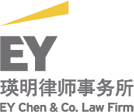Overseas merger and acquisition (M&A) provides an effective approach for Chinese companies to embrace the global economy and diversify their portfolios across the world. The closing of overseas M&A deals only marks the first step towards successful overseas investment. More importantly, buyers need to have overall plans and strategic integration approaches in place to address subsequent issues related to integration, such as design of governance structure, formulation and alignment of rules and policies, and arrangements concerning equity incentives and employment contracts.
Integrating governance structures to prevent and control risks

Partner
EY Chen & Co. Law Firm
A well-defined management system and power structure is the precondition for ensuring proper management and governance of the target. From the due diligence stage, a Chinese buyer needs to take full account of the target’s organizational structure, rules of procedure, remits and duties of management, and decision making mechanisms for significant issues. With overall strategies in mind, it should then proceed to establish a governance structure and design a solution for integrating with management organs, rules, policies, management and control approaches of the target, which will provide a foundation for effective management and control over the overseas target.
Once control over the target is acquired, the buyer should leverage the expertise of an experienced team of lawyers to identify positioning of the target in line with its development objectives and present conditions, then design a governance structure with horizontal integration and vertical controls in mind, and draft corporate governance rules and policies to define the powers and duties of shareholders, the board of directors, general manager and officers, so as to ensure effective integration at corporate structure level.
Integrating the core team to maintain stability of the entity
Maintaining a steady core team and retaining key talents are also crucial for achieving effective integration. Several measures should be taken to ensure this. First, at the outset of the M&A transaction, the buyer should fully assess the risk of losing the core team, and analyze why it wants to leave, and how to keep the core team stable and retain talent. With assistance from a team of lawyers experienced in providing employment-related legal services, it should develop a well-organized employee management policy and draft a carefully crafted sample employment contract that contains, among other things, non-compete and confidentiality clauses. Meanwhile, it should work out talent retention and incentive programmes, which may include competitive remuneration packages and equity incentive plans.
Second, in consideration of the sentimental impact that the deal and subsequent handover may have on employees, a dedicated internal communication mechanism should be established to strengthen dialogue and exchange with employees. Finally, developing an international talent pool to build a strong expatriate team should be a priority, since international talent with pertinent training is able to drive the integration of talent across the entity.
Driving business integration to achieve synergies
Normally, an overseas M&A deal strategically aims to achieve business synergies so that core competencies of both the buyer and the target will be improved. Given the potential adverse impact that an M&A deal may have on the existing suppliers and customer base, it is crucial to address relationships with external stakeholders properly to maintain and develop the target’s supplier resources, markets, customer base, channels and even brand effect and business model.
The buyer should put external publicity at the top of its agenda at the outset of the M&A transaction. Conveying the buyer’s intention of takeover accurately and precisely, and demonstrating its management and operation capabilities, not only helps allay the concerns of stakeholders but is also conducive to building trust and confidence in Chinese companies. Internally, thorough communication related to the change of roles and duties should be conducted with employees of both the buyer and target to ensure transparency, consistency and continuity of internal rules and processes.
Completing technology integration to keep continuous growth
Chinese companies strive to go global because overseas M&A transactions provide them with access to advanced technologies and processes of targets, and enable capital appreciation through optimized internal asset allocation. Setting up policies and incentives related to technology research,
development and maintenance will be conducive to achieving technology upgrades and building core R&D capabilities, as well as the capabilities of maintaining and ongoing development of technologies, which in turn enables sustainable business growth. Where the integration of core technicians is concerned, while attaching significance to retaining and attracting them, companies should also take appropriate measures to bring innovation capabilities of technicians into full play.
Driving cultural integration to enable holistic integration
Despite being the most challenging follow-up issue of overseas M&A deals, cultural integration is easily underestimated in terms of difficulty and process. Effective cultural integration should be built around the principle of “agreeing to disagree” and aim to explore and absorb merits in the target’s culture so as to build an all-embracing, diversified corporate culture. For this purpose, when implementing the overseas M&A deal, the Chinese buyer should have an appropriate cultural integration strategy and programme in place for integrating its culture with that of the target in terms of code of conduct, philosophies and values.
Specifically, the information collection stage as part of the preparation for the deal should cover cultural information about the target including its logo, environmental facilities, working procedures, proceedings at meetings, code of conduct, daily etiquette, and approach of communication. Based on these details, an assessment and analysis that particularly includes comparison with the buyer should be conducted from multiple dimensions in order to work out an effective integration plan. It must also be noted that a progressive approach should be taken towards cross-cultural integration following an overseas M&A deal. Eagerness for quick results must be avoided.
A successful integration will enable complementation of advantages between the buyer and target as well as optimal resource utilization that drive synergies, improve operational competitiveness and maximize enterprise value. Effectiveness of integration will depend on the ability to take a strategic approach as soon as possible, and to properly cope with challenges arising in this process.
Author: Lin Zhong is a partner at EY Chen & Co. Law Firm
中国上海市浦东新区世纪大道100号
上海环球金融中心51楼 邮编:200120
51/F, Shanghai World Financial Center
100 Century Avenue, Pudong New District
Shanghai 200120, China
电话 Tel: +86 21 6881 5499
传真 Fax: +86 21 6881 7393
电子信箱 E-mail:
zlin@eychenandco.com
www.eychenandco.com






















